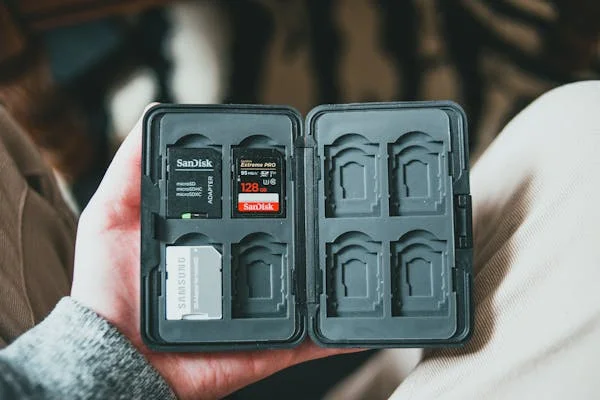Introduction
In the digital age, data storage and management have become essential for both personal and professional use. A folder of 42GB may seem like a lot of space, but for those dealing with large files, it can be a regular occurrence. In such cases, mirroring that folder — creating an exact replica — is one of the best ways to ensure data security and synchronization across devices. In this article, we’ll discuss everything you need to know about mirror folders, particularly focusing on how to mirror a 42GB folder efficiently. From choosing the right tools to setting up the process, we will cover all aspects to help you manage large data effectively.
What Is a Mirror Folder?
A mirror folder is an exact duplicate of another folder. This means that every file within the original folder is duplicated exactly in the mirrored version, maintaining an exact replica. Any changes made to the original folder are automatically reflected in the mirrored folder, providing a real-time backup solution. Mirroring helps ensure that the data remains consistent and secure, which is critical when dealing with important files.
The Importance of Mirroring Folders
Mirroring folders, especially those containing large files like a 42GB folder, offers multiple advantages. Here are some key benefits:
- Data Backup: Mirroring ensures that a backup copy of your files is always available. If something goes wrong with the original folder, you have an immediate backup to recover from.
- Synchronization: For people working across multiple devices or teams, mirroring ensures that everyone has access to the most up-to-date version of the files.
- Security: A mirrored folder is an added layer of security in case the original data is corrupted, deleted, or becomes inaccessible.
- Disaster Recovery: In the event of system crashes, hardware failures, or accidental deletions, a mirrored folder can serve as a critical recovery option.
Why Mirror a 42GB Folder?
A 42GB folder is relatively large, and mirroring such a folder ensures that you don’t risk losing important files. Here are a few reasons why you might want to mirror a large folder like this:
- Massive File Handling: When dealing with video files, large databases, or project folders, the size can quickly accumulate. Mirroring helps keep everything in sync and available on multiple devices or locations.
- Redundancy for Large Projects: If you are working on large projects such as movies, software development, or data analysis, having a mirrored folder provides redundancy and peace of mind.
- Seamless Team Collaboration: If the folder is shared between multiple users or departments, mirroring ensures that all team members have access to the latest updates in real-time.
- Cloud Storage Integration: For users who want to sync their files across the cloud, mirroring a 42GB folder can be an easy way to ensure all data is backed up and accessible from anywhere.
Tools for Mirroring a 42GB Folder
Mirroring a 42GB folder requires the right tools. There are several applications and utilities that cater to different operating systems, and each has its own advantages and limitations. Below, we’ll look at some of the most reliable tools for creating mirrored folders.
1. SyncToy (Windows)
SyncToy is a free and simple tool provided by Microsoft for syncing and mirroring files and folders on Windows. It’s user-friendly and works well for folders of all sizes, including 42GB directories.
Key Features:
- Easy Interface: SyncToy has a simple interface that makes it easy to set up mirroring for your folders.
- Customization: You can choose how the tool synchronizes folders — whether to mirror the entire folder or only specific files.
- Incremental Syncing: It only copies new or modified files after the first sync, which saves time and bandwidth.
SyncToy is an excellent choice for beginners or those looking for a straightforward solution for folder mirroring.
2. Robocopy (Windows)
Robocopy (Robust File Copy) is a command-line tool included in Windows. It’s more advanced and offers powerful features for mirroring folders, particularly for large directories like 42GB folders.
Key Features:
- High-Speed Copying: Robocopy is designed for high-performance file copying, which is essential when dealing with large folders.
- Advanced Options: It provides various options for customizing the mirroring process, such as including/excluding files, mirroring attributes, and handling errors.
- Resilience: If the process is interrupted, Robocopy can resume from where it left off, ensuring that you don’t have to start over.
While Robocopy is perfect for advanced users and large data sets, it does require familiarity with the command line.
3. rsync (Linux and macOS)
rsync is a powerful command-line tool that works well for syncing and mirroring directories on Linux and macOS systems. It’s a favorite among developers and system administrators.
Key Features:
- Efficiency: rsync uses an efficient algorithm that only copies files that have been modified or added, which helps reduce time and resource usage.
- Cross-Platform Compatibility: Although it’s primarily a Unix-based tool, rsync is available on Windows through third-party tools like Cygwin.
- Remote Syncing: You can use rsync to mirror folders between local systems or across networks, including remote servers.
For Linux or macOS users, rsync is one of the best options for folder mirroring.
4. MirrorFolder (Windows)
MirrorFolder is another dedicated tool for mirroring folders in real-time. This software offers powerful features to help manage large folders like 42GB.
Key Features:
- Real-Time Mirroring: It mirrors changes to the folder instantly, which is ideal for users who need live updates.
- Customizable Schedules: You can set MirrorFolder to run mirroring tasks automatically at certain intervals.
- Multiple Destination Support: The software allows you to mirror your folders to multiple destinations, such as local drives, network drives, or cloud storage.
MirrorFolder is a robust solution for Windows users looking to automate the mirroring process.
5. Cloud Storage Services (Google Drive, Dropbox, OneDrive)
Cloud services like Google Drive, Dropbox, and Microsoft OneDrive provide built-in folder synchronization. These platforms offer automatic syncing and file backup options, making them a great choice for those who want a mirrored folder in the cloud.
Key Features:
- Access Anywhere: Once your folder is mirrored in the cloud, you can access it from any device with internet access.
- Automatic Syncing: Cloud services automatically sync changes to your folders in real-time, so you don’t have to worry about manually mirroring your data.
- File Sharing: These platforms offer easy file sharing features, making them ideal for teams working together on a large project.
Cloud storage is perfect for people who want their mirrored folder to be accessible remotely and need automatic syncing.
How to Mirror a 42GB Folder: Step-by-Step Guide
Mirroring a large folder like 42GB requires careful planning and the right tools. Below is a step-by-step guide for setting up a mirrored folder.
Step 1: Assess Storage Requirements
Before you begin, make sure the destination storage location — whether it’s a local drive, network drive, or cloud — has enough available space to accommodate the full 42GB. If you’re using a cloud service, ensure that you have enough storage in your plan to cover the size of the folder and potential growth.
Step 2: Choose the Right Tool
Depending on your operating system, choose a tool that best suits your needs. If you’re using Windows, tools like SyncToy or Robocopy are good choices. For Linux or macOS, rsync is a reliable option. For cloud storage, services like Google Drive or Dropbox are excellent for automatic syncing.
Step 3: Set Up Initial Synchronization
For a first-time mirror, the entire 42GB folder will need to be copied to the destination. This may take a while, depending on the method you’re using — whether it’s a local backup, network sync, or cloud upload.
- Local Sync: If you’re syncing to another local device, ensure both devices are connected and have sufficient power and storage.
- Cloud Sync: For cloud storage, ensure you have a fast internet connection to upload the 42GB folder in the shortest amount of time.
Step 4: Set Incremental Updates
Once the initial sync is complete, set the tool to perform incremental updates. This means only new or modified files will be synced after the initial mirroring, saving time and resources.
Step 5: Monitor and Verify
After the initial synchronization, regularly check the mirrored folder to ensure that all files are being updated properly. Tools like Robocopy and rsync provide logs that help you verify the syncing process. In cloud storage, you can check the folder via your web browser to ensure all files are up-to-date.
Challenges of Mirroring a 42GB Folder
While mirroring is a powerful tool, there are a few challenges to consider:
- Storage Space: A 42GB folder requires an additional 42GB of storage space. If your destination drive or cloud plan doesn’t support this size, you may run into storage issues.
- Syncing Speed: Initial synchronization can be time-consuming, especially over slower internet connections or with older hardware. Make sure you’re using fast devices and networks to speed up the process.
- File Conflicts: Occasionally, syncing tools might encounter issues like file conflicts or incomplete transfers. Regularly checking the mirrored folder and using software that handles these conflicts well can help mitigate this problem.
Conclusion
Mirroring a 42GB folder provides a reliable way to protect, backup, and synchronize important data. Whether you’re using SyncToy, Robocopy, rsync, or cloud storage services, each tool offers specific features that cater to different needs. With the right approach, mirroring ensures your data stays secure, accessible, and synchronized across multiple devices or locations.
Frequently Asked Questions (FAQs)
What is a mirror folder?
A mirror folder is an exact duplicate of another folder, automatically reflecting any changes made to the original.
How do I mirror a 42GB folder?
You can use tools like SyncToy, Robocopy, rsync, or cloud services such as Google Drive and Dropbox to mirror a 42GB folder.
What are the best tools to mirror a 42GB folder?
Tools like SyncToy, Robocopy, rsync, and cloud services like Google Drive, Dropbox, and OneDrive are great for mirroring large folders.
Can I use cloud storage to mirror a 42GB folder?
Yes, cloud services like Google Drive, Dropbox, and OneDrive can mirror a 42GB folder, syncing files across devices.
Is mirroring a 42GB folder safe?
Yes, it’s safe, but ensure enough storage space is available and that your syncing tool works correctly.
What challenges may occur while mirroring a large folder?
Challenges include storage space limitations, slow syncing, and file conflicts. Monitoring the process ensures smooth operation.




